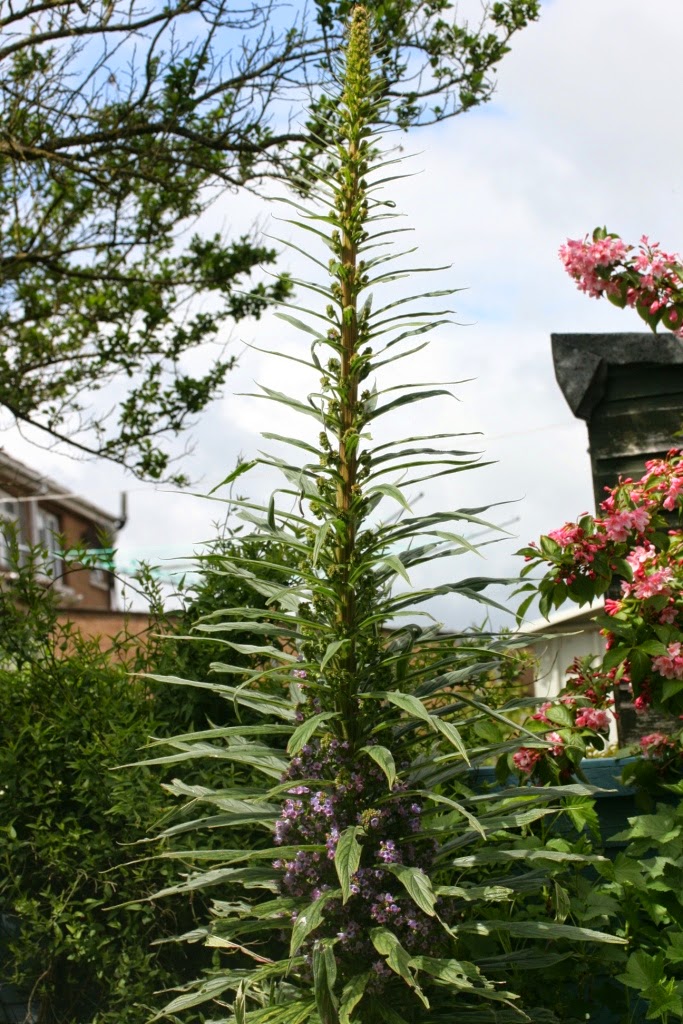Bumblebees generally seem to be a bit slow this year, which makes me wonder what hibernation survival was like after the wettest winter on record. Perhaps a fair proportion of the gravid queens drowned?
To get really good views of bumblebees I have been growing the Jewel of Tenerife
or as I have now seen it labelled Giant Viper's Bugloss (Echium pininana) with some success for the last decade and more. They can
take up to 5 years to flower, but when they do, you and everybody else in the
vicinity knows about it, as their flowers spikes are between 16-20 feet tall. They
seem to be remarkably wind tolerant, never having lost one to being uprooted, even though part of our roof blew off. They are monocarpic, so they died once they have
flowered, but seed profusely before doing so.
I have had to wait only 4 years for this one, as all my plants got wiped out in the 2010 winter, and I was a bit slow in starting to plant again.
As you can see, the flowers are now open at the bottom, and will continue to repeat flower there as the rest of the column comes into flower. These flowers last until the bumblebees are ready to go into hibernation in the autumn in October/November depending on the season. So ideal for the little beasts.
And the reason for bothering to make all this effort is to get bumblebees feeding at eye height about a foot away from the garden path, and turning up to pollinate all the fruit bushes, raspberry canes and everything else I grow.
So the first Tree Bumblebee worker of the year in the garden was this individual
Which just goes to show what a really poor white "tail" you can get on so of them. But there is not another bumblebee in UK which is buff at the front end (thorax) just like 2-3 carder bumblebees but has a jet black body (abdomen) with or without many white hairs on the last 2-3 segments.
Whereas this afternoon
I had this individual turn up who had a full complement of thick white hair covering all three final segments of her abdomen, in a not quite perfect image in bright sunshine. So she had obviously read all the bumblebee id guides and knew what she was supposed to look like.
So there ends a mini class on Tree Bumblebee (Bombus hypnorum) id and mad but patient horticulture...
I am sure you are or will all see them in the coming weeks.





Lots of Tree Bumblebee workers visiting our Raspberry canes at the moment. I must try again with the giant Echium - I failed last time due to my poor skills at keeping things alive.
ReplyDeleteGeorge
I have also failed with the E. pinnatum, though I now have an over abundance of E. vulgare which is not yet out. There's no Raspberry in our garden, but we have plenty tree bees on our Cotoneaster horizontalis and they also seem very partial to the tiny flowers of Frangula alnus, which seems to make them aggressive to other bees!
ReplyDeleteJust had a quick walk in the garden in the drizzle and Tree Bees were the most numerous species (12+), otherwise just a few male pratorum competing for the Frangula flowers and a few hortorum females having sole custody of the Digitalis...
ReplyDelete